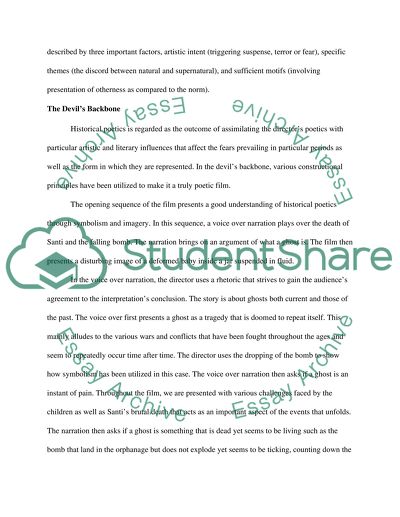Cite this document
(“Discuss the historical poetics relation with The Devil's Backbone, Essay”, n.d.)
Discuss the historical poetics relation with The Devil's Backbone, Essay. Retrieved from https://studentshare.org/visual-arts-film-studies/1630174-discuss-the-historical-poetics-relation-with-the-devils-backbone-focus-on-two-close-analysis-of-two-sequences
Discuss the historical poetics relation with The Devil's Backbone, Essay. Retrieved from https://studentshare.org/visual-arts-film-studies/1630174-discuss-the-historical-poetics-relation-with-the-devils-backbone-focus-on-two-close-analysis-of-two-sequences
(Discuss the Historical Poetics Relation With The Devil'S Backbone, Essay)
Discuss the Historical Poetics Relation With The Devil'S Backbone, Essay. https://studentshare.org/visual-arts-film-studies/1630174-discuss-the-historical-poetics-relation-with-the-devils-backbone-focus-on-two-close-analysis-of-two-sequences.
Discuss the Historical Poetics Relation With The Devil'S Backbone, Essay. https://studentshare.org/visual-arts-film-studies/1630174-discuss-the-historical-poetics-relation-with-the-devils-backbone-focus-on-two-close-analysis-of-two-sequences.
“Discuss the Historical Poetics Relation With The Devil'S Backbone, Essay”, n.d. https://studentshare.org/visual-arts-film-studies/1630174-discuss-the-historical-poetics-relation-with-the-devils-backbone-focus-on-two-close-analysis-of-two-sequences.


